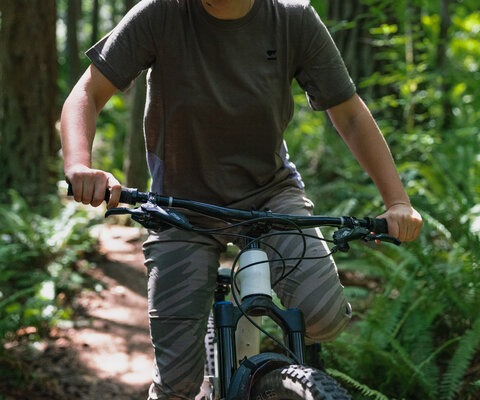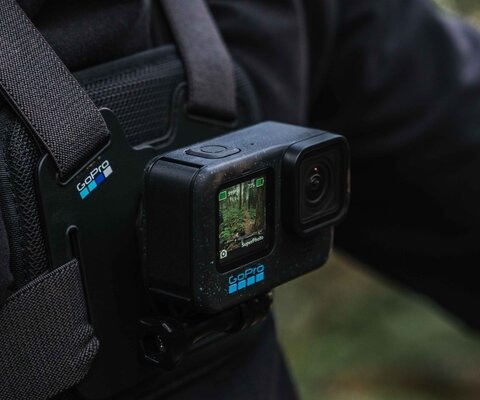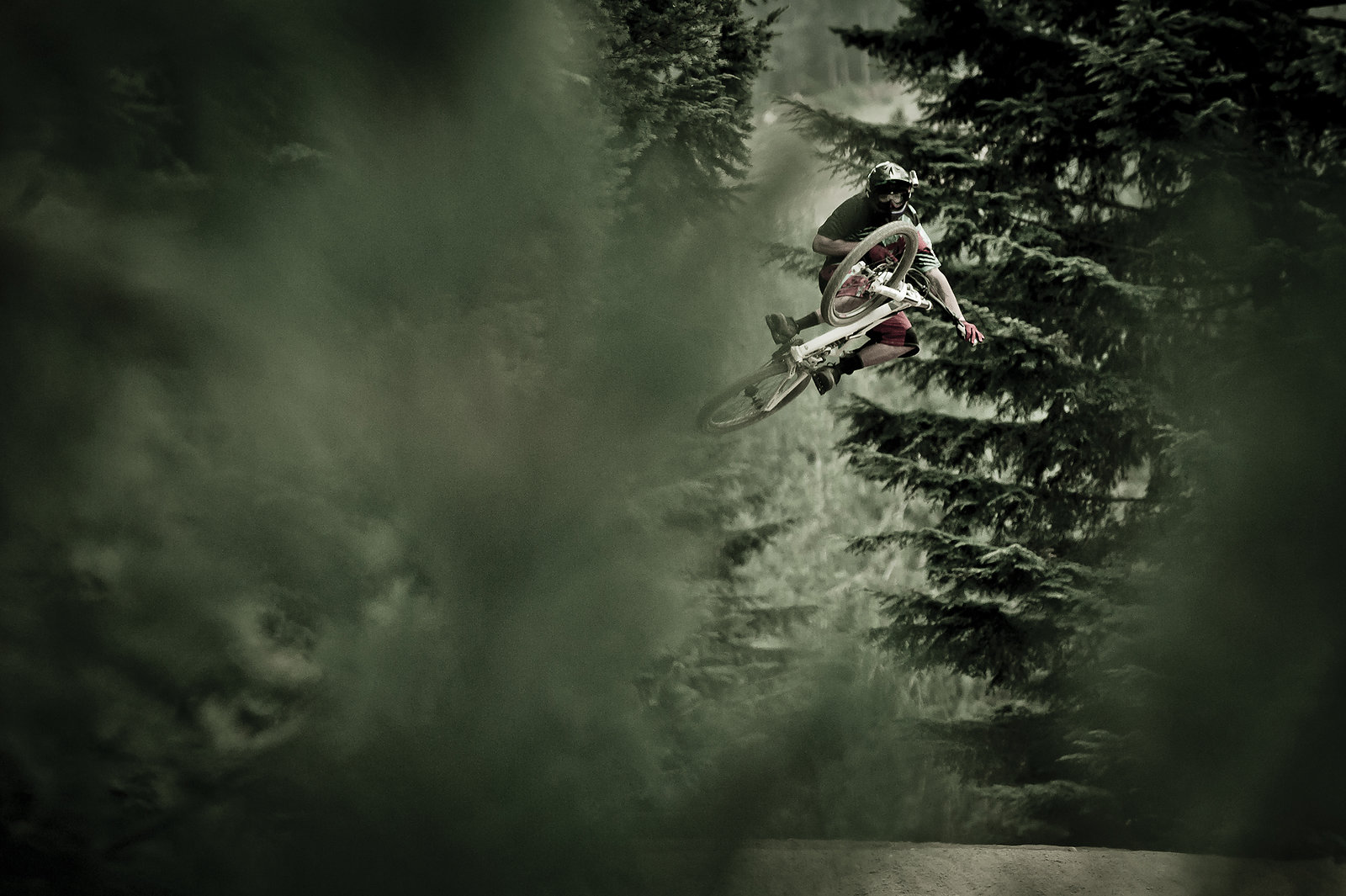
Rider . Geoff Gulevich
Tall Order
How Deep Summer elevated an already tall man’s standing in the bike industry
Reuben Krabbe is tall. Like, really tall. At 6’5”, the slim man with the wispy blond mustache is memorable mostly because of his imposing height, but get to know him better and the born-and-raised Calgarian turns out to be an easy-to-laugh, thoughtfully-spoken, funny dude. And then, of course, there are the photos. In two short years, Krabbe’s imagery has moved from his blog and personal website to the pages of the most respected magazines in the bike industry. Yes, it’s safe to say Reuben Krabbe has arrived—and he’s bigger than he’s ever been.
This is no more evident than in his win at Whistler Blackcomb’s esteemed 2012 Deep Summer competition, which pits five photographers against each other in a three-day test of endurance, versatility and work ethic. Krabbe not only took the 2012 win but did it with dominance over the field, which included none other than action sport photography juggernaut Scott Markewitz, and mountain biking’s omnipresent documentarian Ian Hylands. So how did this towering young photo nerd come to be mountain biking’s newest photographic powerhouse? As with most big things, it started small.
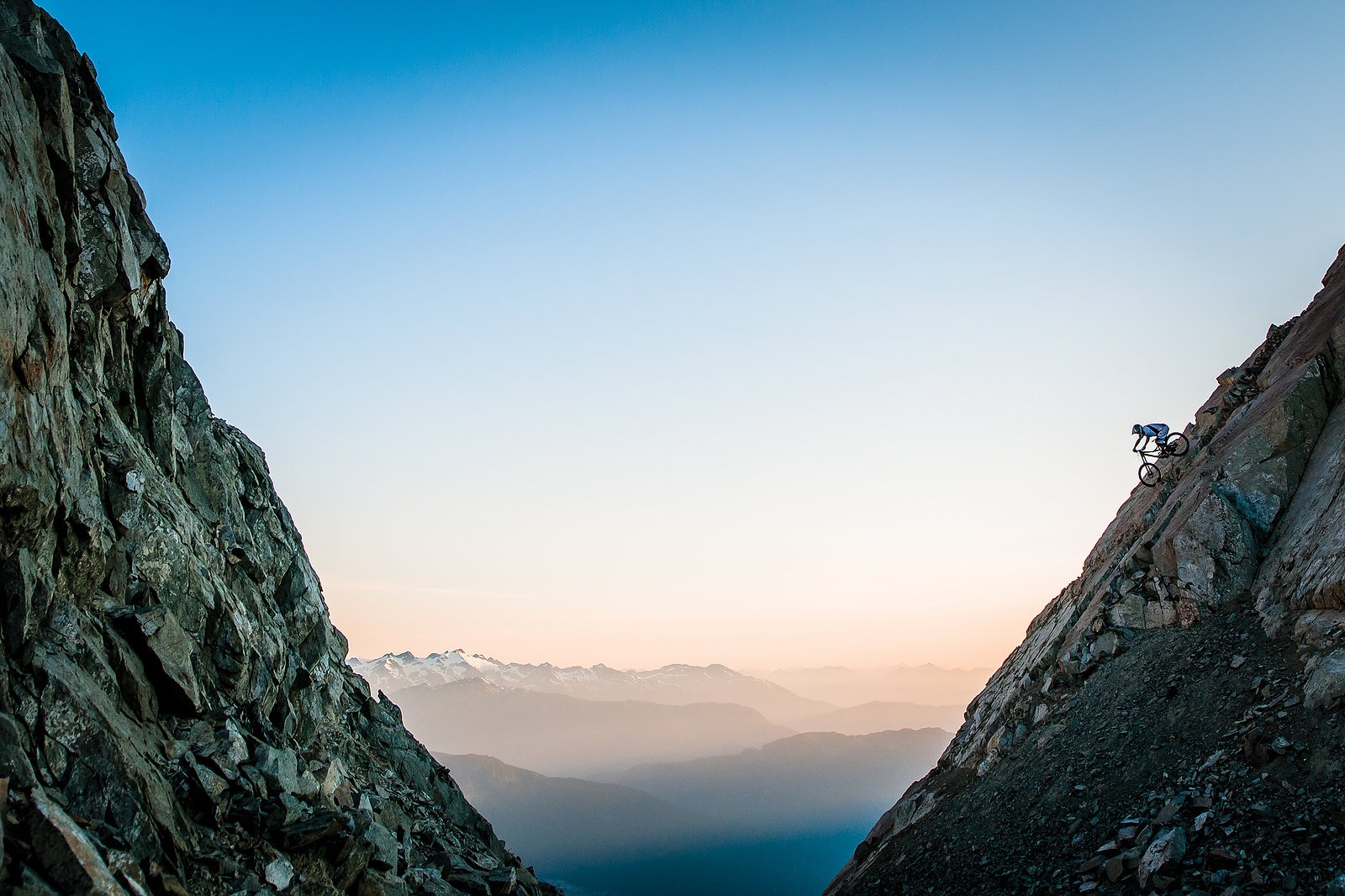
Rider . Kenny Smith
“I began shooting in high school.” Says Krabbe. “I didn’t think of it as a career, but after graduation I thought, ‘I don’t know what else to do so I might as well try to do something I enjoy.’” Krabbe enrolled in Victoria, B.C.’s Western Academy of Photography and honed his craft.
During a stint volunteering at the World Ski and Snowboard Festival, he had the opportunity to see the Pro Photographer Showdown. “That was the year Jordan Manley won [2009],” says Krabbe. “And I was like, ‘Woah, that’s something I want to do.’ It wasn’t just pretty pictures. It was the whole presentation. You get to control how the images are seen. In a magazine, people can flip by. In a slideshow, you can build up this sensory feel and emotion that might just be peripheral in a magazine. It’s a mindset, taking them out of their current experience and immersing them into this world.”
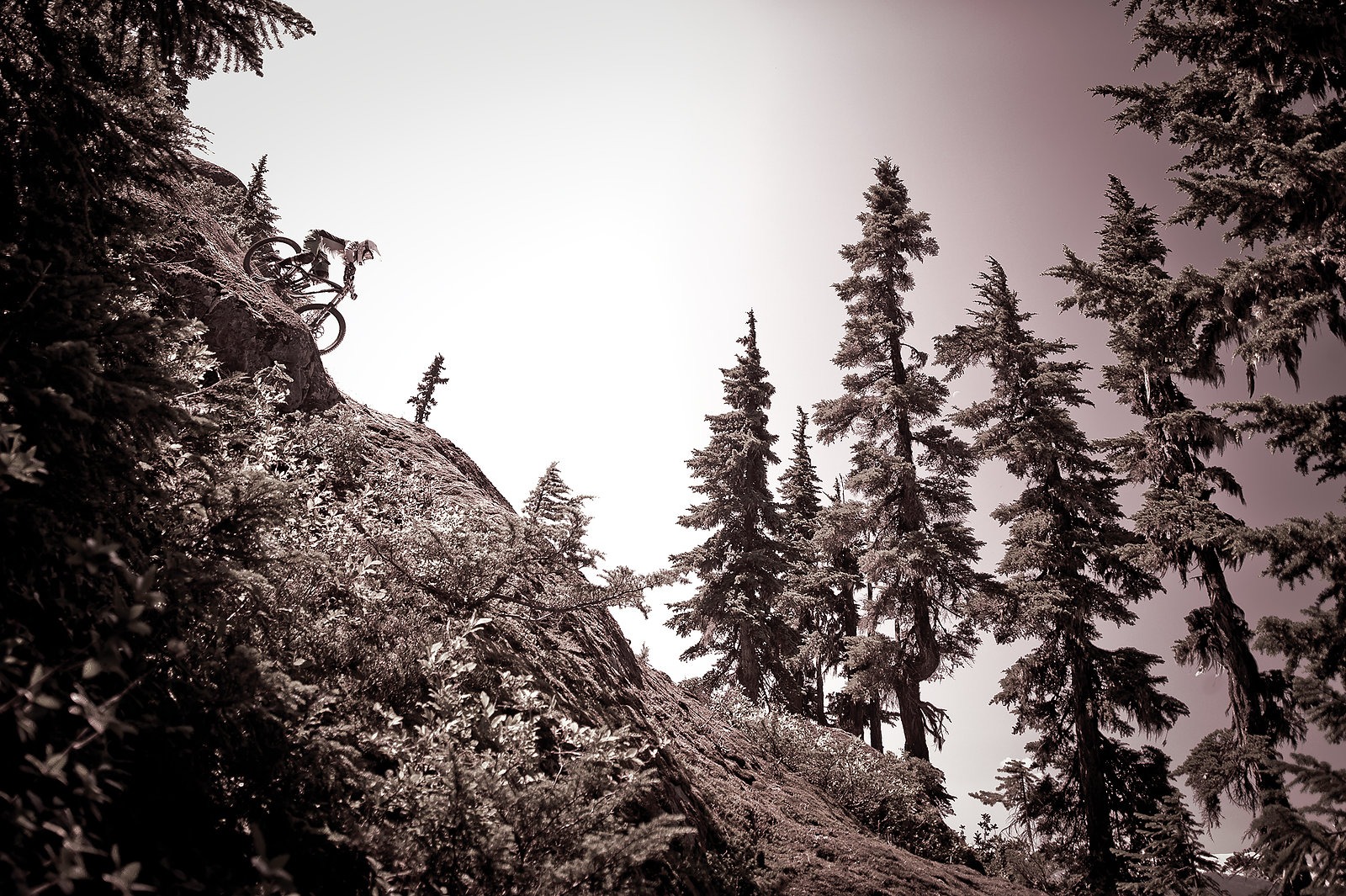
Rider . Sarah Leishman
Trail . Filthy Ape
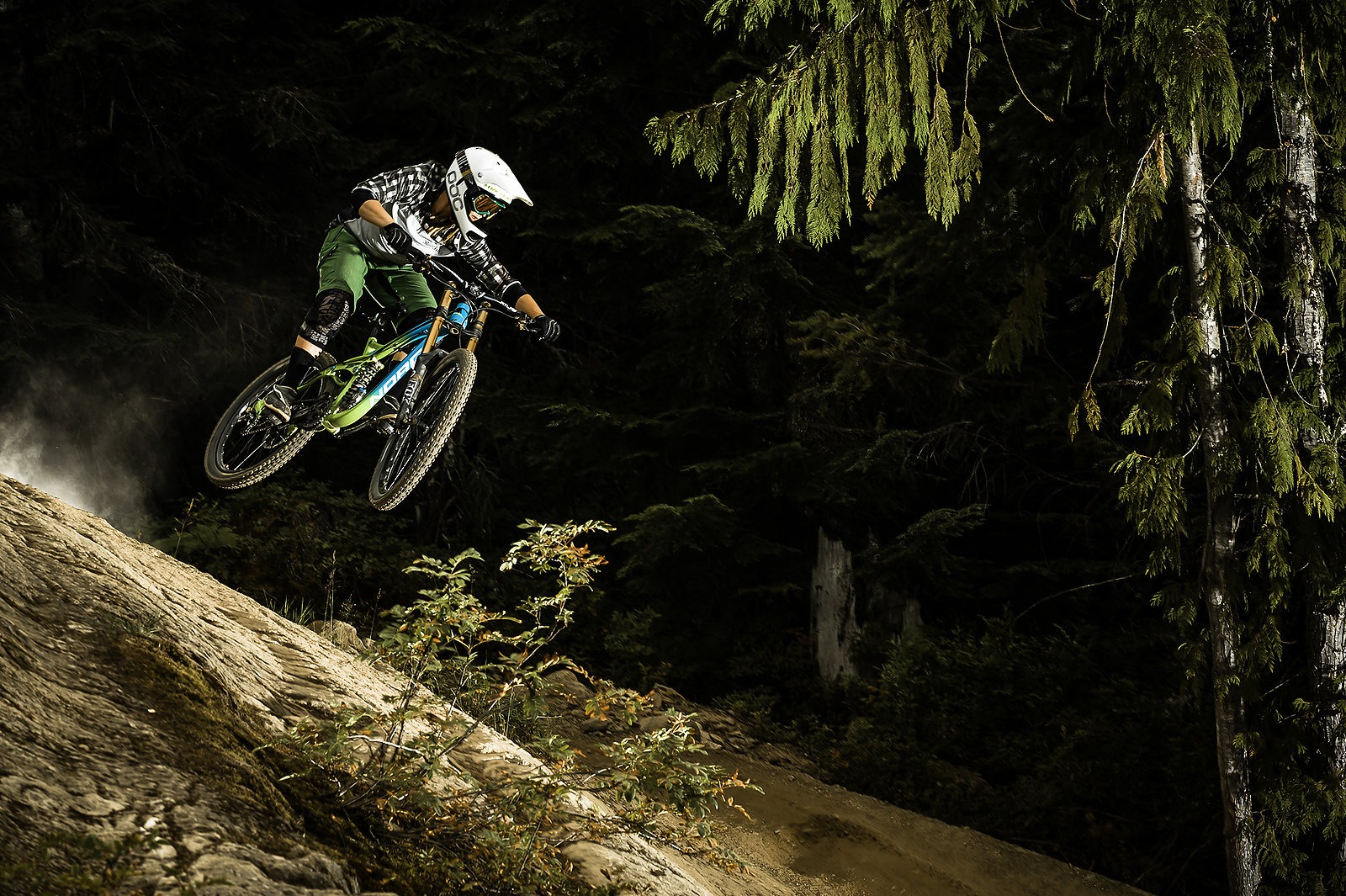
Trail . Schleyer
Krabbe’s five-minute Deep Summer show demonstrated a versatility that comes only as a result of extensive experimentation and a work ethic that arguably can’t be taught outside of childhood. Treetop perspectives of bike park berms are contrasted against star-trailed portraits from Whistler Peak. Amputees, children and friends play as important a role as pro athletes like Geoff Gulevich, Sarah Leishman and Kenny Smith. Artful in-camera double exposures and expansive landscapes don’t just pad out the space between radical whips and railed berms. They stand alone while adding to the whole.
For every action shot there’s an equally contemplative image that only enforces the show’s theme—synthesis. Krabbe is a thinking man, and it shows in these details. Like Manley and Blake Jorgenson before him, he displays insight and precision. It’s these qualities—not the “Look, at me. I’m ripping, bro” approach many shooters employ—that allow Krabbe to stand high above his competition.
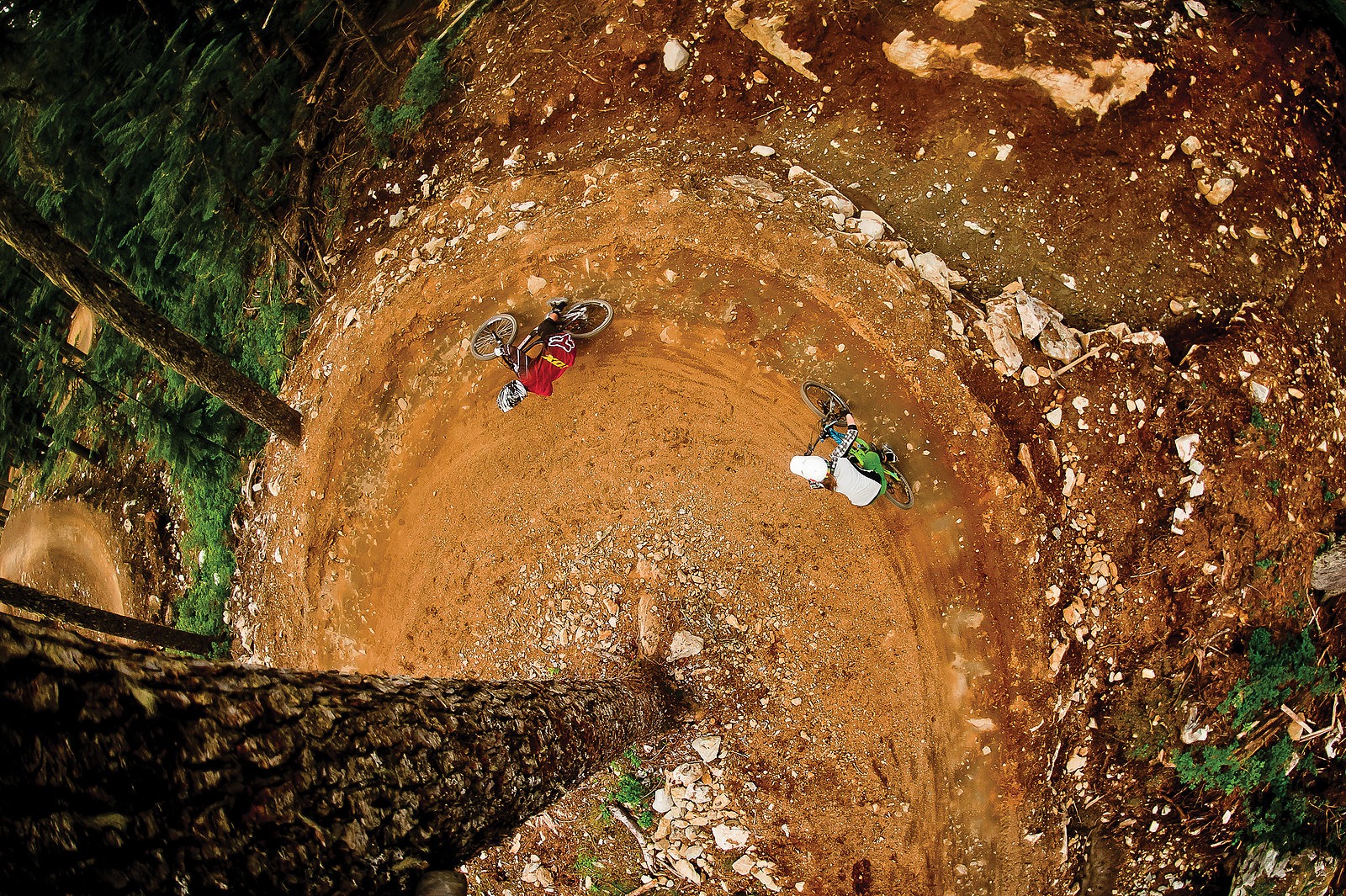
Riders . Kenny Smith & Sarah Leishman
Trail . Black Velvet
While tricks and whips are impressive, it’s the people, process and experiences that stand out. Krabbe knows this and it shows.
Spend enough time at these events and a pattern emerges. Those whose shows look like magazine ad portfolios place second, third and beyond. Those who shoot like a National Geographic feature stand on top of the podium. It’s the dedication to storytelling, and the minutiae beneath the fat-tired universe, that create great slideshows. While tricks and whips are impressive, it’s the people, process and experiences that stand out. Krabbe knows this and it shows.
On the third and final day of Deep Summer competition, Krabbe got too comfortable and crashed hard on A-Line, punching a hole in his elbow. After a visit to the hospital to get stitched up, he and Gulevich rode back out and nailed two more action photos that made the final cut. This fortitude, paired with his creative attention to detail, allows Krabbe to go one step further. Double exposures, for example, were once mainstays in a photographer’s bag of tricks. Since the advent of digital, few shooters purposefully compose them, instead relying on Photoshop to layer multiple images.
The ability to climb further—up trees, peaks and over the many logistical obstacles that occur during these shoot-and-run contests—means Krabbe collects unique angles like most photographers collect Instagram likes. He’s private and humble about his imagery and, instead of putting it out there, holds onto it until it’s perfect and published. Deep Summer is a rare example of Krabbe sharing imagery on such a short notice, but it’s for good reason.
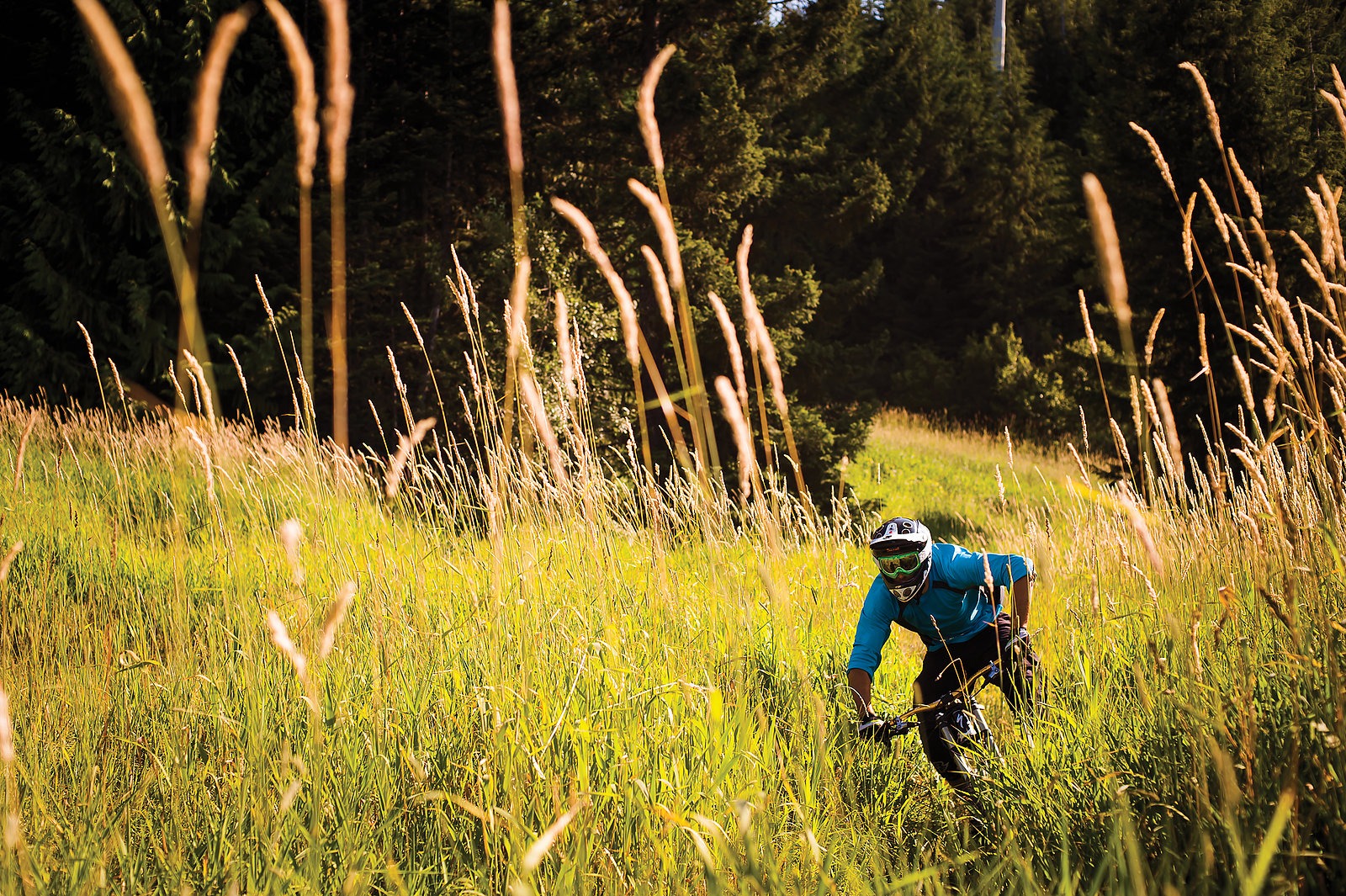
Rider . Stephen Matthews
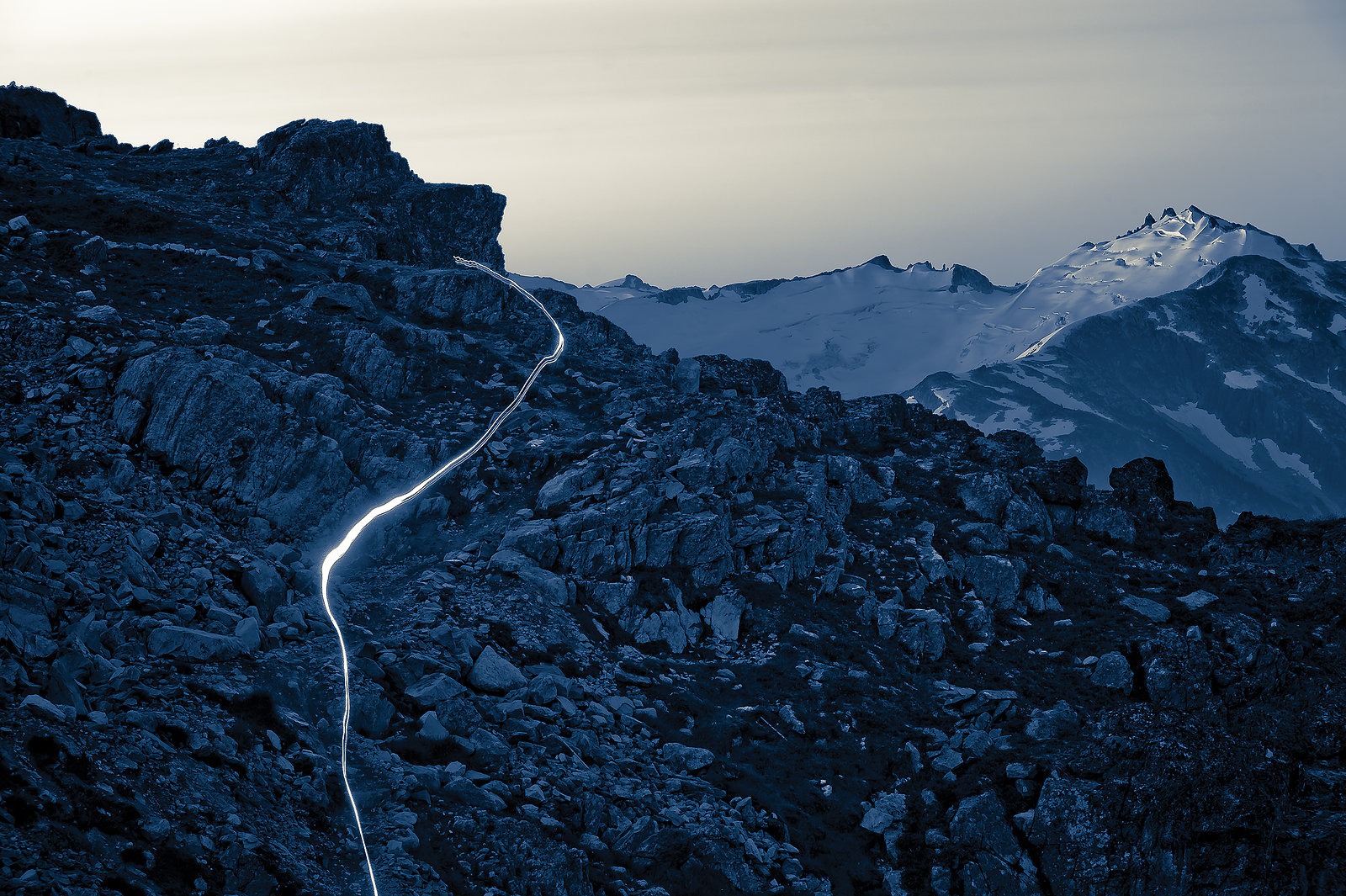
Trail . Peak Trail
“These competitions are a platform to stand on and announce your arrival in sports,” says Krabbe. “There are all these incremental moments in your career that only you and your friends hear about: first published photo, first gallery shot, first cover. When you enter one of these contests and do well, people truly take notice.”
And take notice they have. While away on a ski assignment this winter, Krabbe got a call from Bike magazine photo editor David Reddick. Reddick—known throughout the industry for being the most discerning eye in action sports—wanted to know if Krabbe could fly to the Deep South for a feature assignment. “I never thought I’d be going to Alabama,” says Krabbe. “It just wasn’t somewhere I thought photography would take me.”
To those who are watching, Krabbe’s career will take him a whole lot further than that.
